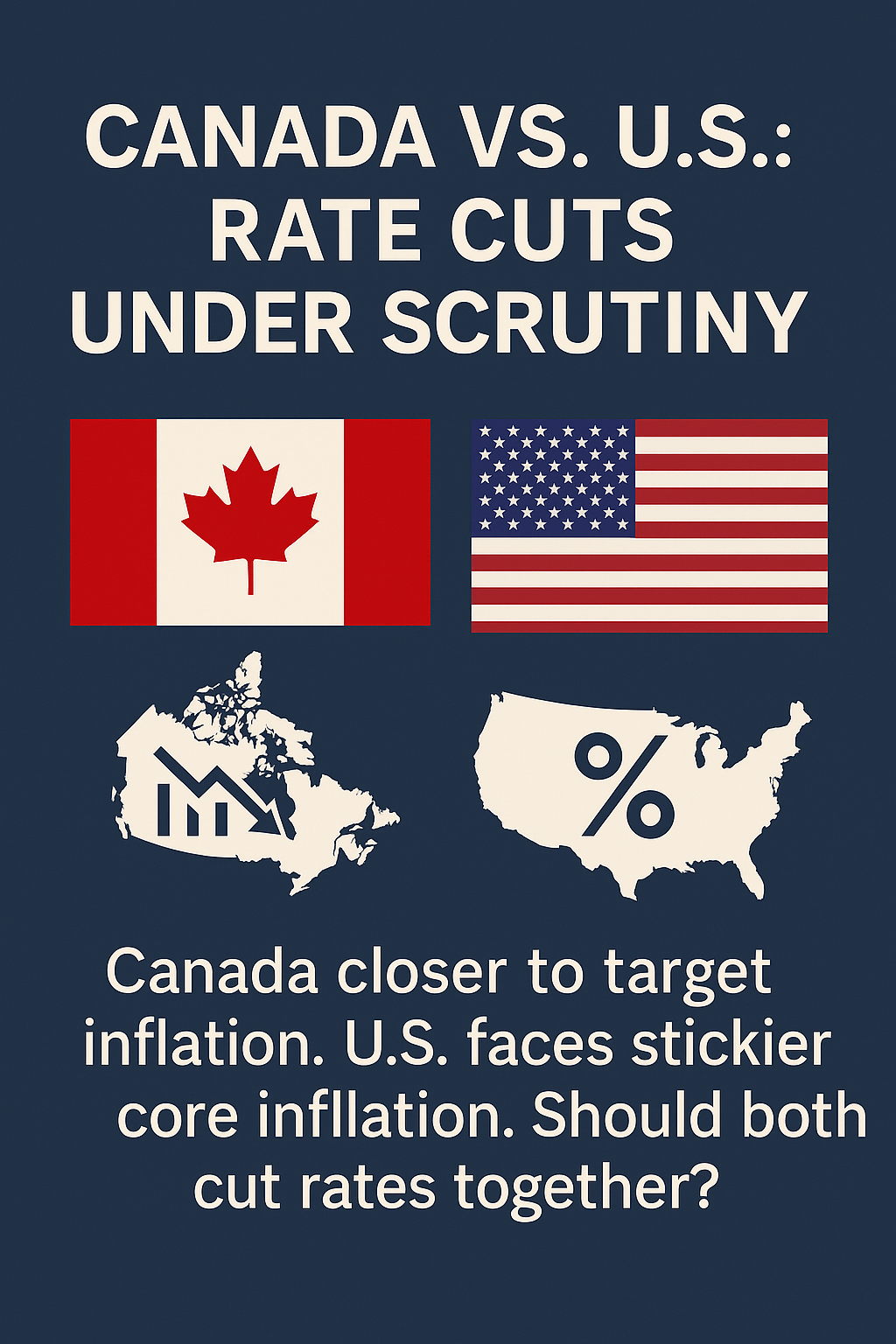Here’s a side-by-side of recent economic data for Canada vs. the U.S. to help see how similar or different their situations are. This should clarify whether cutting rates at the same time makes sense
🇺🇸 U.S. Economy – Key Indicators
Indicator Current / Recent Value / Forecast Comments
Inflation (headline CPI) ~2.7% year-over-year (US CPI, July 2025)
Core Inflation (excluding food & energy) Slightly higher, generally showing stickier inflation
GDP Growth Forecast Slowing: forecasts put real GDP growth at ~1.6-2.0% in the U.S. for next year. Some surveys (e.g. SIFMA) are more pessimistic (~0.9% for 2025) for parts of the year
Unemployment / Labor Softening somewhat; risks elevated. Still relatively steady labor market, though some cooling signs
Interest-Rate Outlook Markets expect some cuts; inflation is coming down but remains above target in many core measures
🇨🇦 Canadian Economy – Key Indicators
Indicator Current / Recent Value / Forecast Comments
Inflation (headline) 1.9% annual rate (August 2025), slightly below expectations
Core Inflation More persistent: core measures like “CPI-trim” or “CPI-median” are around 3.0-3.1% in recent reports
GDP Growth / Momentum Canada had strong quarterly growth in some recent periods (e.g. 4th quarter of 2024 saw ~2.6% annualized vs. expectations). But the outlook has weakened somewhat: growth is slowing due to trade uncertainty and policy uncertainty
Unemployment / Labor Signs of weakening: Canada’s unemployment has risen; labour market is softening
Interest-Rate Outlook Because inflation is lower, and headline inflation is near target, the Bank of Canada is seen as likely to cut rates (e.g. expectations are high for a 25bp cut)
Comparing the Two: Similarities & Differences
Here are the key takeaways from comparing the data:
Area Similarity Difference
Inflation Both countries have inflation that is trending down (or close to target) in headline measures Canada’s headline inflation (~1.9%) is lower than the U.S. (~2.7%). However, Canada’s core inflation remains more “sticky” (around 3.0-3.1%), while U.S. core is elevated but also under close watch
Growth / GDP Momentum Neither economy is booming; both are seeing slowing momentum, trade uncertainty, and external pressures U.S. forecasts appear more cautious/slower for upcoming periods; Canada had some stronger past quarters, but faces greater downside risk from trade and foreign policy
Labour Market Both have signs of weakening or at least easing after a strong post-COVID tightness U.S. labor market is still generally stronger overall; Canada is seeing perhaps more pronounced softening
Policy / Interest Rates Both central banks are likely considering (or already planning) rate cuts, given easing inflation
Implication: Should They Cut Together?
Given the comparison:
It makes more sense for Canada to move first (or more aggressively) toward cutting interest rates, because inflation is closer to target, economic activity has slowed, and downside risks (trade uncertainty, etc.) are more visible.
For the U.S., the case is weaker: while inflation is moderating, core inflation and labor market conditions suggest more caution. Cutting too early could risk inflation rising again or limit flexibility if things worsen.
So, synchronizing rate cuts (i.e. both countries cutting at the same time and magnitude) is not clearly justified given the current data. There could be some room for coordinated cutting if global conditions (commodity prices, trade, etc.) support it, but on local economic terms, their situations are different enough that policy divergence is likely more appropriate.
CK Sharma
Editor-in-Chief
Toronto

